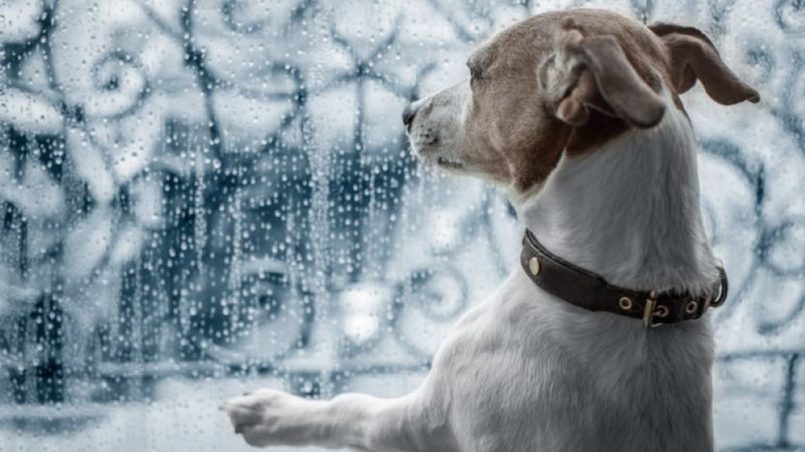While sunny days are perfect for romps in the park, rainy days can leave both you and your furry friend feeling cooped up. But don’t fret! Indoor spaces can be transformed into fantastic playgrounds for socialization and mental stimulation. This is especially important for pets who need to develop positive interactions with their own kind.
The Importance of Pet Socialization
Socialization is the process of introducing your pet to a variety of people, animals, sights, sounds, and experiences in a safe and controlled way. This crucial stage in development helps your pet learn appropriate behavior in social settings, reducing fear and anxiety later in life.
Here are some key benefits of good pet socialization:
- Increased Confidence: A well-socialized pet is comfortable meeting new people and animals, leading to a more relaxed and confident demeanor.
- Reduced Stress: Exposure to different situations helps your pet adapt and cope with unfamiliar environments, minimizing stress levels.
- Improved Behavior: Socialization can teach your pet appropriate play behavior, reducing the risk of aggression or fear-based reactions.
- Stronger Bond: Spending quality time socializing with your pet strengthens your bond, fostering trust and understanding.
Beyond Rainy Days: Creating a Socialization Plan
While rainy days offer a perfect opportunity for indoor socialization, it’s important to make it a regular part of your pet’s life. Here’s how to create a comprehensive socialization plan:
- Start Early: Begin socializing your pet during their sensitive puppy/kittenhood window (ideally between 3-16 weeks).
- Gradual Exposure: Introduce your pet to new experiences gradually, ensuring positive interactions throughout.
- Controlled Environment: Keep the environment controlled during initial socialization sessions to minimize stress.
- Positive Reinforcement: Reward calm and confident behavior with treats and praise during social interactions.
- Respectful Interactions: Be mindful of your pet’s comfort level and allow them to withdraw from overwhelming situations.
Fun and Engaging Indoor Socialization Activities
Now that we understand the importance of socialization, let’s explore some fun activities to keep your pet entertained and engaged indoors:
Playdates with Friends’ Pets:
- Planning: Choose a friend with a well-socialized pet of similar size and temperament.
- Supervised Play: Always supervise playdates and be prepared to intervene if any signs of discomfort arise.
- Gradual Introductions: Start introductions in a neutral space like a park bench before moving indoors.
- Positive Reinforcement: Reward positive interactions with treats and praise to create a positive association.
Scent Games and Scavenger Hunts:
- Engage the Senses: Hide treats or toys for your pet to find, stimulating their natural sense of smell.
- Customized Difficulty: Adjust the difficulty by varying hiding locations and using different scents.
- Multi-Pet Fun: If you have multiple pets, organize separate hunts to avoid competition and frustration.
- Mental Stimulation: These games provide a mental workout, tiring out your pets and reducing unwanted behaviors.
Obstacle Courses and Interactive Toys:
- Build a Course: Use pillows, boxes, and tunnels to create a safe and challenging obstacle course.
- Variety is Key: Change up the course layout frequently to keep your pet engaged and challenged.
- Interactive Toys: Invest in puzzle toys that dispense treats, encouraging problem-solving skills.
- Multiple Pet Fun: This activity can be enjoyed by multiple pets, fostering playful interaction.
Training Sessions with a Twist:
- Social Cues: Teach basic commands like “sit” and “stay” in front of a friend or family member.
- Trick Time: Train your pet a fun trick and have them perform it for a “guest.”
- Positive Reinforcement: Reward successful attempts with treats and praise, creating a positive association with social interactions.
- Group Training Classes: Consider enrolling in group training classes after initial socialization for more structured interaction.
Remember:
- Safety First: Always prioritize the safety of all pets involved in social interactions.
- Body Language: Pay close attention to your pet’s body language (tucked tail, flattened ears) and remove them if they appear stressed.
- Respectful Interactions: Respect your pet’s boundaries and allow them to withdraw from overwhelming situations.
Conclusion:
Rainy days don’t have to be a downpour for your pet’s social life. By incorporating these fun and engaging activities, you can transform your home into a haven for socialization and build a strong bond with your furry friend. Remember, socialization is a continuous process that benefits your pet’s overall well-being throughout their life.



